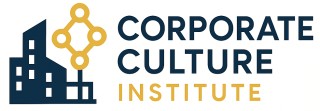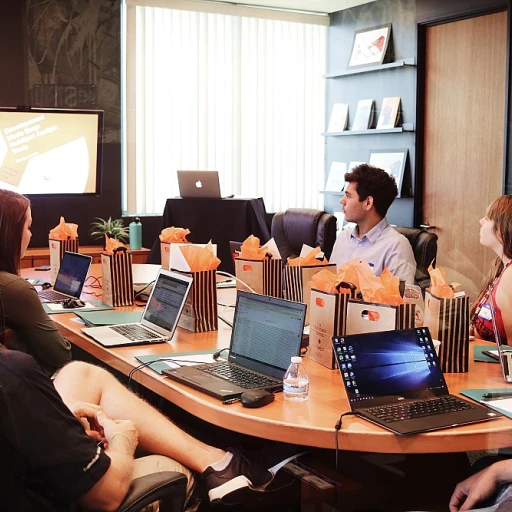
Understanding the Role of Corporate Culture
Foundation of Strength and Unity
The role of corporate culture in enhancing organizational performance cannot be overstated. In the quest to improve business outcomes, a robust company culture acts as the foundation upon which all strategies are built. It defines the work environment, shaping how employees feel, act, and persevere in their roles. An effective corporate culture aligns with the business goals, steering employees and the organization towards a unified direction.
A healthy corporate culture ensures that team members understand and embrace the company’s values, leading to a cohesive unit that thrives on shared objectives. This sense of unity is crucial for organizational effectiveness, as it fosters enhancing corporate culture through people, process, and technology. A strong culture encourages commitment to the vision of the company which, in turn, inspires employees to perform at their best.
Leadership plays a vital role in molding the corporate culture. Leaders need to model the values they wish to see, acting as the embodiment of the company’s mission. Through consistent and genuine actions, leaders set the tone for a positive work environment, driving organizational health and employee engagement. When leaders prioritize cultural development, they lay the groundwork for long-term business performance and sustained organizational success.
Aligning Values and Goals
Aligning Organizational Values with Achievable Goals
Aligning the values and goals within an organization is crucial for improving business performance. When values and goals are in harmony, they create a clear direction for both management and employees, fostering a cohesive work environment. This alignment boosts company culture, guiding every team member in the same direction, thereby achieving greater organizational effectiveness.
To align values and goals, leaders must first ensure that their company's core values are clearly defined and understood by all employees. This understanding helps employees feel connected to the organization's mission, which subsequently enhances their engagement and commitment to the business objectives.
Leaders should regularly communicate these values and goals to the team to cultivate a shared understanding. Fostering open communication across all ranks in the organization helps align individual aspirations with team objectives. Such synchronization not only facilitates better work performance but also improves long-term organizational health.
Another critical aspect of aligning values and goals is the establishment of an effective performance management system. This system can support leaders in evaluating and adjusting strategies to ensure they remain aligned with the organization's goals. Regular evaluation through performance reviews is essential in tracking progress and implementing necessary changes.
Organizational leaders should also encourage the input of team members in setting goals. By involving employees, businesses can enhance employee engagement and motivation, allowing employees to take ownership of their work. This inclusivity will help nurture a culture of accountability and transparency, integral components of a strong organizational culture.
Fostering Open Communication
Promoting Transparent Interactions for Enhanced Outcomes
In any organization striving to boost performance, fostering open communication is a cornerstone. When employees feel they can communicate freely, business performance thrives, as open dialogue can significantly enhance organizational effectiveness. Firstly, establishing an environment where team members are encouraged to express their ideas and concerns is crucial. This can lead to improved employee engagement, as individuals feel more valued and understood. This engagement directly impacts employee performance, creating a ripple effect throughout the company.- Open communication helps break down silos within teams, facilitating collaboration and innovation. A company culture that prioritizes open exchanges motivates employees to strive towards shared goals, thus enhancing the overall organizational health.
- Transparency in communication builds trust among employees and leaders. Trust is vital for achieving long-term performance management success. When employees trust that their leaders uphold transparency, it boosts morale and organizational performance.
- Open communication channels enable constructive performance reviews. Honest feedback can help align values with organizational goals, ensuring employees are on the path towards continuous improvement. For more insights into enhancing performance reviews with peer feedback, explore strategies.
Encouraging Employee Engagement
Boosting Employee Engagement for Organizational Success
Engagement is a critical factor in enhancing both employee and organizational performance. When employees are genuinely engaged, they contribute more effectively to achieving the organization's goals, which positively impacts business performance. Company culture plays a pivotal role in fostering this level of engagement.
To help employees feel connected, it’s important to create an environment where team members understand their role in the larger company objectives. This clarity can be achieved through effective performance management systems that align individual performance with organizational goals. Regular performance reviews serve as a platform to discuss progress and areas for improvement, ensuring that employees remain on track and motivated.
Projects and tasks should be designed to encourage collaboration among teams, enhancing their work performance. Team leaders and management must advocate for a culture where employees are encouraged to voice their opinions and ideas. This open communication will not only boost engagement, but also improve organizational effectiveness by encouraging innovation and change.
Additionally, digitally adopting tools that facilitate seamless communication and collaboration can amplify employee engagement across dispersed teams. Leaders should inspire employees by recognizing their contributions towards the organization's success, thus fostering a robust company culture that thrives on appreciation and recognition.
"An engaged employee is an asset that can substantially improve business outcomes, influencing both organizational health and long-term sustainability."
Emphasizing strong leadership, recognizing achievements, and nurturing a supportive work environment will contribute to a more engaged workforce, ultimately leading to improved business performance and a thriving organizational culture.
Implementing Continuous Learning
Promoting a Learning Environment for Growth
In the pursuit of exceptional organizational performance, fostering a culture of continuous learning is pivotal. Marrying the concepts of employee engagement and talent management with an ingrained ethos of education can fortify a business's competitive edge. By promoting ongoing development, companies not only enhance the skill set of their team members but also boost morale and work performance. To elevate performance across the board, businesses should implement strategies that encourage skill enhancement. This not only serves the immediate work needs but also prepares employees for future challenges. Here are some methods that can help cultivate a dynamic learning environment:- Training Programs and Workshops: Regularly organized programs allow employees to acquire new skills relevant to their roles. They also help in achieving broader organizational goals by addressing gaps in current capabilities.
- Mentorship Initiatives: Establishing mentorship setups encourages knowledge transfer from seasoned professionals to newer team members. It also fosters a sense of team belonging, which aids employee performance.
- Online Learning Platforms: Leveraging digital adoption with online resources and e-learning platforms ensures that learning opportunities are accessible at any time. This flexibility can significantly improve business performance by empowering employees to upskill at their own pace.
- Performance Reviews as Learning Tools: Instead of viewing performance reviews solely as evaluation mechanisms, they can be transformed into a valuable opportunity for constructive feedback and development planning. This approach aligns with performance management best practices.
- Diverse Learning Opportunities: Encouraging employees to explore various fields within the organization enhances their engagement and lends to sustained organizational effectiveness. This variety in learning fosters innovation and can significantly improve organizational culture.
Measuring and Adapting Strategies
Assessing and Evolving for Continued Success
Organizations must prioritize monitoring and refining their strategies to sustain enhanced performance. This involves a robust performance management system that evaluates organizational effectiveness, ensuring goals are aligned with business objectives. Leaders should regularly conduct performance reviews to assess team and employee performance, spotlighting areas for improvement. Implementing change is not a one-time task but an ongoing endeavor. The company culture thrives on continuous feedback loops, fostering a dynamic environment where employees feel valued. This promotes long-term engagement and empowers teams to adapt to changing demands. To effectively measure an organization's performance, a comprehensive approach is vital:- Utilize Varied Metrics: Combining quantitative data with qualitative insights offers a holistic view of team dynamics and work performance. Surveys, interviews, and digital adoption analytics contribute to understanding the employee experience.
- Regular Check-ins: These facilitated touchpoints between management and team members ensure open communication and provide opportunities for leadership to address performance gaps.
- Iterative Strategy Adjustments: Based on acquired insights, management must be willing to implement changes that align with evolving organizational goals.













